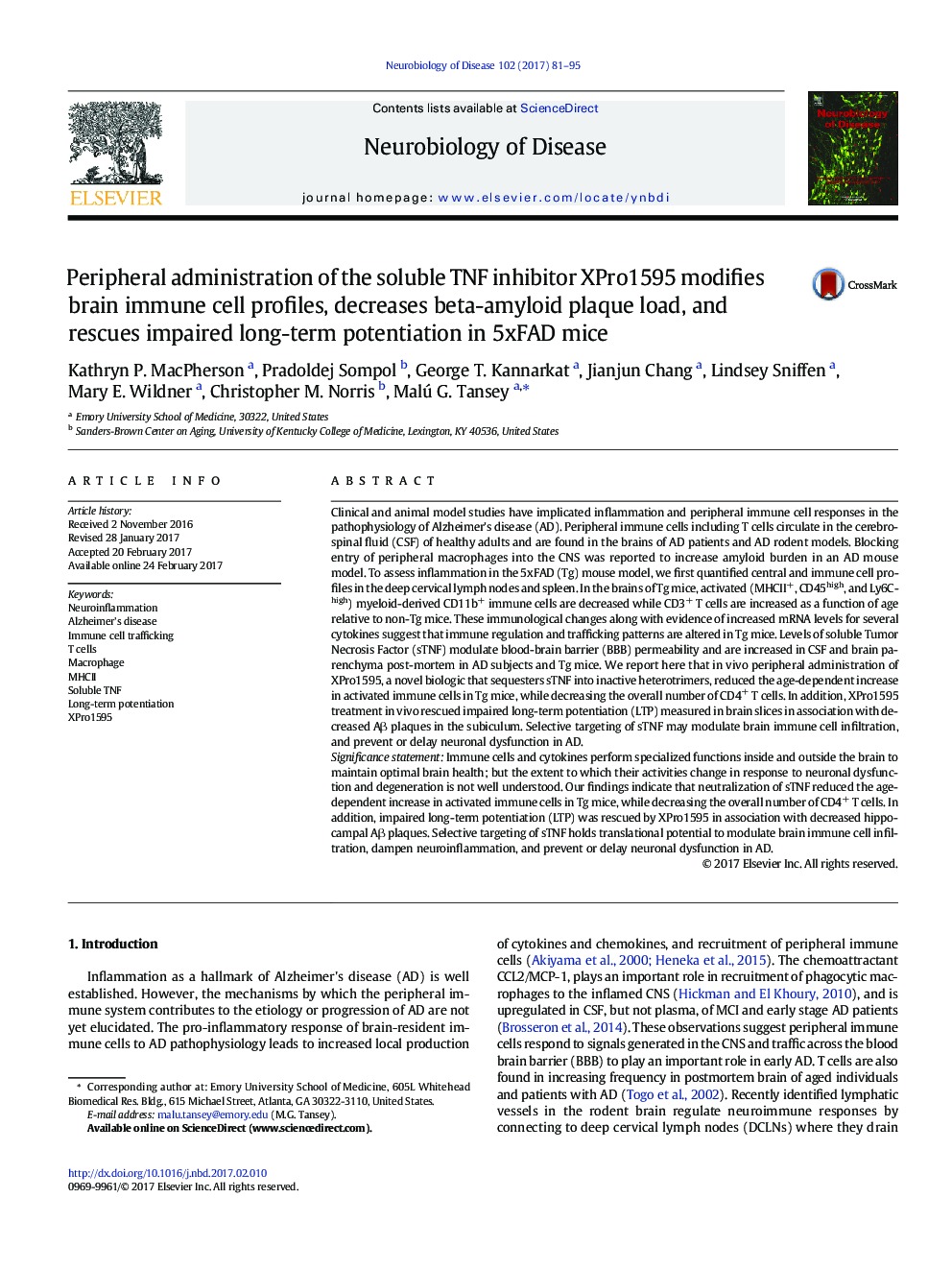| کد مقاله | کد نشریه | سال انتشار | مقاله انگلیسی | نسخه تمام متن |
|---|---|---|---|---|
| 5630557 | 1580619 | 2017 | 15 صفحه PDF | دانلود رایگان |

- Inhibition of sTNF mitigates the age-dependent changes in activated immune cells and brain CD4+ T cells in 5xFAD mice.
- Inhibition of sTNF signaling in vivo rescued the impaired LTP deficits in association with decreased hippocampal Aβ plaques.
- Selectively targeting sTNF has translational potential to modulate immune cell infiltration and neuronal dysfunction in AD.
Clinical and animal model studies have implicated inflammation and peripheral immune cell responses in the pathophysiology of Alzheimer's disease (AD). Peripheral immune cells including T cells circulate in the cerebrospinal fluid (CSF) of healthy adults and are found in the brains of AD patients and AD rodent models. Blocking entry of peripheral macrophages into the CNS was reported to increase amyloid burden in an AD mouse model. To assess inflammation in the 5xFAD (Tg) mouse model, we first quantified central and immune cell profiles in the deep cervical lymph nodes and spleen. In the brains of Tg mice, activated (MHCII+, CD45high, and Ly6Chigh) myeloid-derived CD11b+ immune cells are decreased while CD3+ T cells are increased as a function of age relative to non-Tg mice. These immunological changes along with evidence of increased mRNA levels for several cytokines suggest that immune regulation and trafficking patterns are altered in Tg mice. Levels of soluble Tumor Necrosis Factor (sTNF) modulate blood-brain barrier (BBB) permeability and are increased in CSF and brain parenchyma post-mortem in AD subjects and Tg mice. We report here that in vivo peripheral administration of XPro1595, a novel biologic that sequesters sTNF into inactive heterotrimers, reduced the age-dependent increase in activated immune cells in Tg mice, while decreasing the overall number of CD4+ T cells. In addition, XPro1595 treatment in vivo rescued impaired long-term potentiation (LTP) measured in brain slices in association with decreased Aβ plaques in the subiculum. Selective targeting of sTNF may modulate brain immune cell infiltration, and prevent or delay neuronal dysfunction in AD.Significance statementImmune cells and cytokines perform specialized functions inside and outside the brain to maintain optimal brain health; but the extent to which their activities change in response to neuronal dysfunction and degeneration is not well understood. Our findings indicate that neutralization of sTNF reduced the age-dependent increase in activated immune cells in Tg mice, while decreasing the overall number of CD4+ T cells. In addition, impaired long-term potentiation (LTP) was rescued by XPro1595 in association with decreased hippocampal Aβ plaques. Selective targeting of sTNF holds translational potential to modulate brain immune cell infiltration, dampen neuroinflammation, and prevent or delay neuronal dysfunction in AD.
Journal: Neurobiology of Disease - Volume 102, June 2017, Pages 81-95